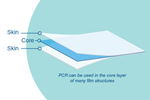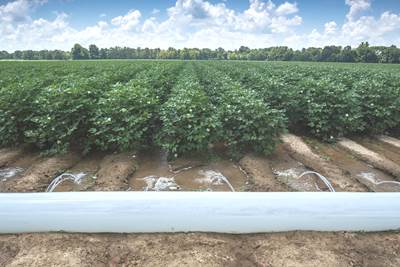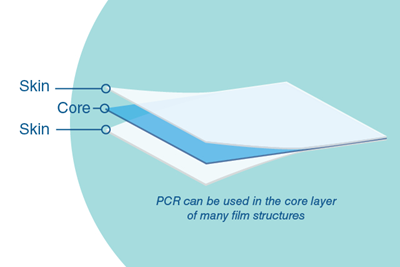Future Caps & Closures: More HDPE, More PCR
Industry experts says uses of HDPE in caps and closures will proliferate and will incorporate PCR and PIR. Future designs will “tether” the caps to the bottles as well.
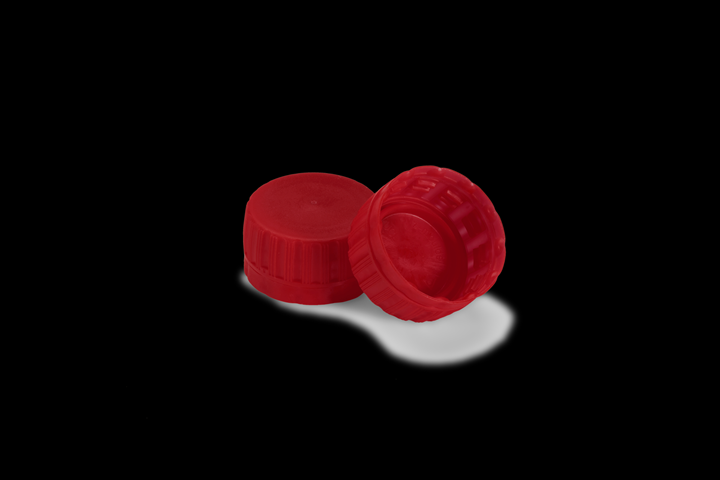
HDPE with incorporation of PCR and PIR will proliferate in caps & closures.
Expect HDPE with post-consumer recycle (PCR) and post-industrial recycle (PIR) content to become dominant in future caps and closures for foods and beverages as well as for non-food packaging. This is the view of Brant Wunderlich, market manager for caps & closures at Nova Chemicals. In a recent discussion with Plastics Technology, Wunderlich gave his take on what we can expect caps and closures of 2030 to look like.
While he concedes that today’s PP caps and closures outnumber HDPE by a two-to-one margin, he sees this trend already changing as HDPE gains traction. “Polyethylene has a much higher recycling rate than PP, so we are aiming to design for recycle as well as material reduction. Polypropylene caps typically have an LDPE liner, so HDPE enables an all-PE closure, making it a better partner to PET beverage bottles that are currently much more highly recycled than PP/LDPE caps.”
Also likely to play a significant role in closures of the future are “tethered” closures to ensure the cap stays on the bottle and enters the recycle stream with it so it does not become litter. These are already required by EU regulation that takes effect in 2024. Wunderlich concludes that PCR incorporation and tethering are likely to shift industry priorities.
Factors Driving Closures in New Directions
Innovations emerging at all stages of the food and beverage packaging supply chain have improved packaging efficiency, safety and sustainability, with closures playing a key role. Wunderlich expects continued innovation with a stronger focus on sustainability as demands from legislation, brand owners and consumers drive the need for new market solutions. “Increased collaboration throughout the supply chain is key to ensure we are able to meet new sustainability targets without compromising the benefits of plastic closures we have all come to rely on.”
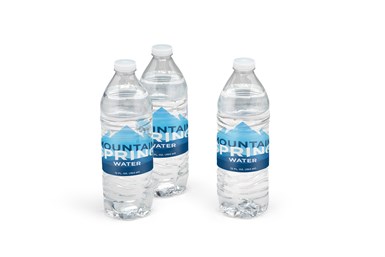
Lightweighting, PCR/PIR incorporation, and recyclability are key factors driving closures and closure resins of the future.
The key factors driving closures and closure resins into new directions include lightweighting, PCR and PIR incorporation, and recyclability.
▪ Lightweighting: This can lower the total environmental footprint of a product as less raw material needs to be produced, processed and transported. Two lightweighting advances bear mention, according to Wunderlich. First is a neck-finish change about a decade ago in many types of beverage bottles, where the threaded portion of the bottle’s neck was shortened, eliminating significant amounts of material for a concurrent closure weight reduction of 20-30%. A second entails a pending opportunity to reduce closure weight by a further 20% (approximately) through more advances in neck-finish design for carbonated soft drinks.
A higher degree of lightweighting in closures for beverages other than water can be achieved with high-performance PEs.
Meanwhile, a higher degree of lightweighting in closures for beverages other than water can be achieved with high-performance PEs, which offer enhanced mechanical properties needed for next-generation caps and closures. Such properties stem from advances in resin design such as bimodal molecular-weight distribution and use of octene comonomer, which provide unique advantages over conventional PE resins. These advanced resins are also viable in closures previously confined to two-part solutions through improvements in molding and mold technology.
▪ PCR/PIR Incorporation: Processors have been successfully incorporating PIR into molded parts for many years. Incorporating PCR takes this a step further. Wunderlich says there are many factors to consider in order to effectively incorporate PCR into closures for both food-contact and non-food applications. “Going forward, these factors will play a larger role in determining the limits for what is feasible as organizations look to maximize recycled content in caps and closures.”
Wunderlich says virgin resins must be designed with incorporation of PCR in mind. “The virgin resin itself must be formulated to retain key physical properties through several mechanical-recycling ‘heat histories,’ which tends to degrade some material properties and introduce volatiles. Cutting-edge additive formulations ensure the ready-to-recycle resin demonstrates exceptional odor and color performance while processing and performing like a virgin resin.”
Nova Chemicals, for one, now offers a suite of Surpass “ready-to-recycle resins” that have been shown to enable greater use of recycled content with virgin resins, increase the market demand for recyclate, and help industry achieve sustainability goals. “Enabling a high percentage of recycled content is relevant to any packaging, but in caps and closures it means a robust resin with strengths that balance the weaknesses of the more general-purpose post-consumer materials that are currently available. The ideal virgin resin has exceptional processability, stress-crack resistance, and toughness against deformation to withstand the rigors of strenuous cap applications such as carbonated soft drinks or hot-fill beverages.”
On use of PIR, Wunderlich notes that it’s most often put directly back into the manufacturing process at the same facility where it was first produced. However, if it is rejected due the final material performance being off-spec, or it otherwise can’t be reused in the same facility, it may be sent to a recycler or sold on the open market into a more suitable application.
▪ Recyclability: Traditionally, most closures have been composed of two or more different materials to meet requirements such as tamper evidence or seal performance, but a transition to fully recyclable, monomaterial PE caps is already underway. As the importance of recycling continues to grow with increased consumer awareness and improvements to recycling infrastructure, designing for recyclability is resurging as a priority among brands.
According to Wonderlich, the “caps-on” approach is the best way to ensure a closure enters the recycling system by keeping it on the bottle. Beverage bottles are typically PET while the monomaterial closure will be PE. Technology or systems that separate the bottle and closure in the sorting process help ensure a clean stream of each material.
A transition to fully recyclable, monomaterial PE caps is already underway.
Although cost and production efficiency continue to be important factors, new recycling guidelines and legislation will shape modern closures and increase interest in elements such as tethering and recyclable barrier resins.
Wunderlich notes that in the case of small HDPE bottles, the benefit of an-all PE closure is clear, as the entire container is monomaterial and can be recycled in the same stream. Adding the common PP closure in today’s typical float/sink polymer separation is problematic with these bottles. Since both PP and PE float, they do not separate easily by density, resulting in a stream of PE recyclate with a significant level of PP contamination.
PET beverage bottles are a different challenge, as many beverage closures, especially for carbonated soft drinks, are made of a PP shell with a PE liner. The bottle and closure material will be separated in the float/sink process because PET sinks. However, you’re still left with a two-material part whose components cannot be separated. As such, an all-PE closure offers the best recyclability in this case as well.
Notes Wunderlich, “Near-infrared (NIR) technology can sort a minor contaminant—whether PP or PE—but it’s not commonly used yet, and it doesn’t work if the split is closer to 50/50. Electrostatic sortation is another emerging technology that can also sort PP from PE—but is still in its very early days.”
Related Content
Polyethylene Fundamentals – Part 4: Failed HDPE Case Study
Injection molders of small fuel tanks learned the hard way that a very small difference in density — 0.6% — could make a large difference in PE stress-crack resistance.
Read MorePrices for PE, PS, PVC, PET Trending Flat; PP to Drop
Despite price increase nominations going into second quarter, it appeared there was potential for generally flat pricing with the exception of a major downward correction for PP.
Read MoreImproving Twin-Screw Compounding of Reinforced Polyolefins
Compounders face a number of processing challenges when incorporating a high loading of low-bulk-density mineral filler into polyolefins. Here are some possible solutions.
Read MorePrices for All Volume Resins Head Down at End of 2023
Flat-to-downward trajectory for at least this month.
Read MoreRead Next
Nova Chemicals, Revolution Partner on PCR Use in Plastic Packaging
The PCR will be available as soon as next month to help converters and brand owners achieve their sustainability goals.
Read MoreFilm Structure Designs Formulated with PCR Debuted by Nova Chemicals
Nova’s new series of customizable film structure designs formulated with post-consumer resin.
Read More


